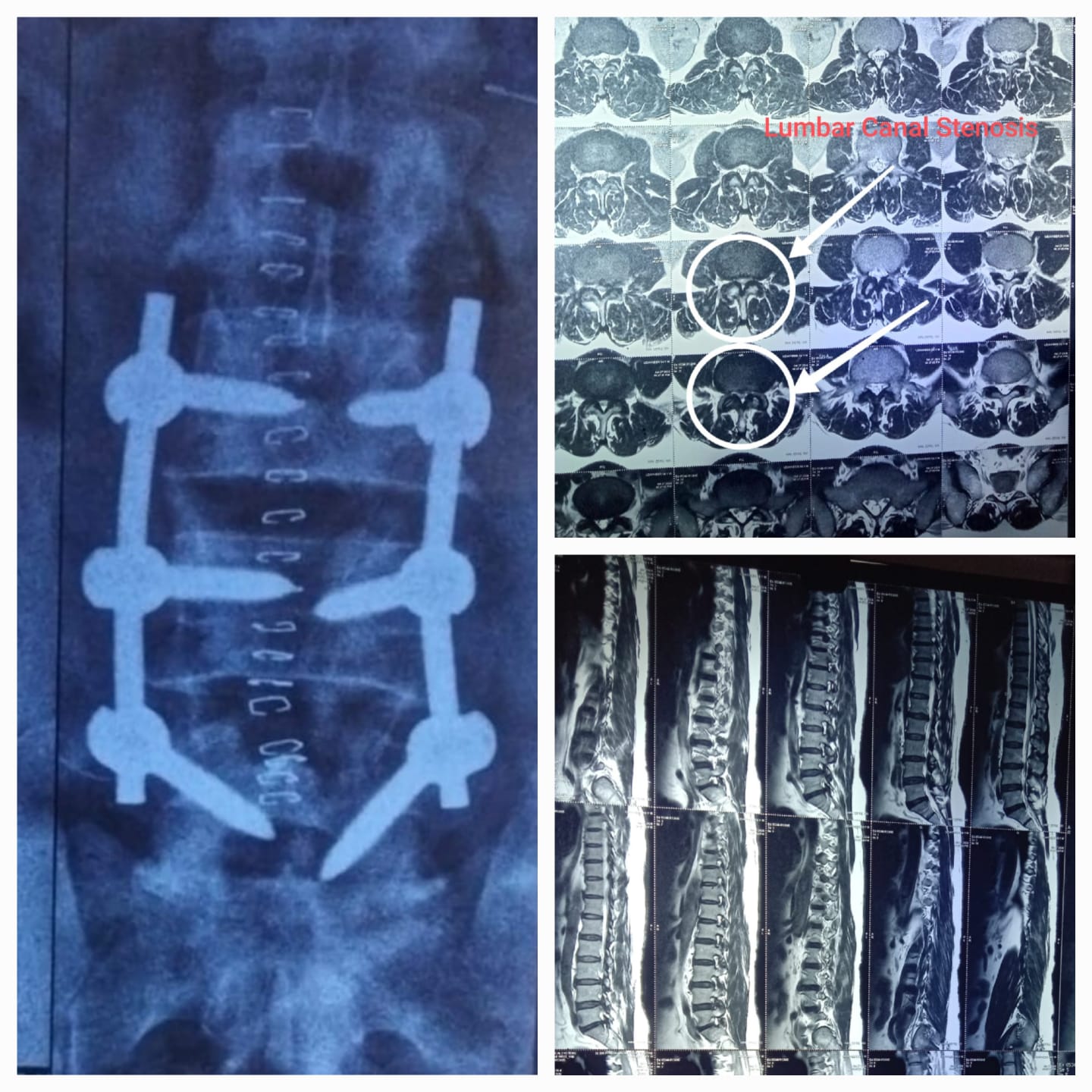Case 1 – Lumbar Canal Stenosis
Patient Snapshot
Age/Sex: 63 years old, female
Main Complaints: Worsening leg pain, numbness, tingling, and left‑leg weakness over several weeks. Pain felt sharp and shooting down the thighs, worse on the left. Also developed clumsiness in the left foot.
Medical Journey
- Pain started after a slip and fall at work in a warehouse doing lifting/pushing.
- Tried many conservative treatments: physical therapy, epidural and nerve‑root injections temporary relief only.
- Has a history of type 2 diabetes, hypothyroidism, and is a former smoker.
Examination & Imaging
- Physical exam showed tight lower-back muscles around L4‑L5, limited movement, and a limp (using a cane).
- Nerve tests: straight-leg raise positive at 55°, decreased reflexes (3/5) in left ankle/knee, numbness in left foot.
- MRI findings:
- L4‑L5: Bulging disc with moderate canal narrowing and severe nerve-side narrowing (foramen).
- L5‑S1: Mild disc bulge, mild narrowing.
-
Diagnosis

- Moderate to severe narrowing (stenosis) of the spinal canal and nerve passages at L4‑L5.
- Mild herniation and foraminal stenosis at L5‑S1 on the left.
-
Surgical Treatment Plan
After discussing pros, cons, and risks, the patient chose surgery. Procedures included:
- Bilateral L4 laminotomies (removing parts of the vertebral “roof” to relieve pressure)
- Left L5 laminotomy
- Decompression (neurolysis) of L5 bilaterally
- Foraminotomy at left S1 (widening the nerve exit canal)
Surgery in Detail
- Under general anesthesia, the patient was positioned face-down.
- Small cuts were made near L4–S1, and X-ray used to confirm levels.
- Bone removal (laminotomy) performed with burrs; ligament tissue removed to free nerves.
- Nerves were carefully unwrapped and checked for adequate space.
- A steroid‑soaked sponge and antibiotic powder were placed before closing in layers.
- No disc removal was attempted; focus was on giving nerves more room.
- Patient woke up and was transferred to recovery in stable condition
Why This Is Important
- The procedure directly alleviated nerve compression, which is the root cause of leg discomfort and paralysis.
- The comprehensive, minimally intrusive method intended to maintain as much normal anatomy as possible while providing long-term relief.
- This method is explicit, step-by-step, and patient-focused, similar to the systematic, detailed approach shown in the “conditions treated” style of the first link.
Final Takeaway
A 63-year-old woman who suffered from persistent back and limb pain, numbness, tingling, and paralysis underwent effective minimally invasive spine surgery. Surgeons alleviated nerve pressure by gently removing small sections of bone and ligament from the L4-L5 and L5-S1 joints. The operation was exact, preserved spine stability, and put her on the path to recovery from her ailments.
